--digital form and casting--
(by Mengna Miao)
1.


"Although more control was gained over the digital FormFinding process, there were a lot of restrictions with using the algorithm. Material behaviour and mesh qualities could not be embedded within the logic of the algorithm. Deforming the mesh was not done in real time either, which was a major restriction. We would like to create a script eventually that solves the problems of the current tools we are using and calculates the forces as output."
2.
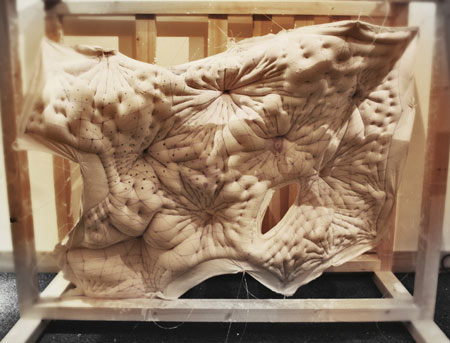

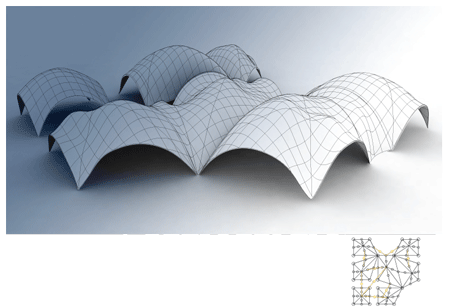

"The project was a collaborative workshop by Brendon Carlin, Kyle Chou, Lluis Enrique Monzo, Carlos Piles and Faysal Tabbarah, investigating "matter as computation"."
"Called Grompies, the project involved translating a computer-generated pattern into stitched lines across the fabric using a sewing machine and by hand."
"A virtual pattern is generated on the computer through behavioral rule sets which play out with no finite time limits."
"A moment is observed in the looping of those behaviors in virtual space, and captured."
3.
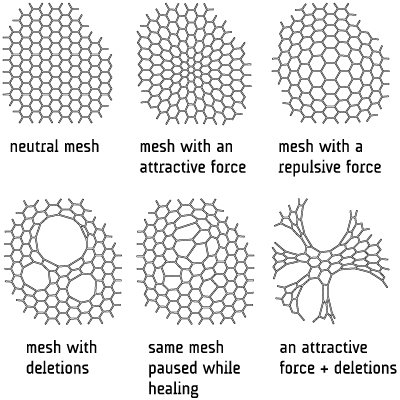
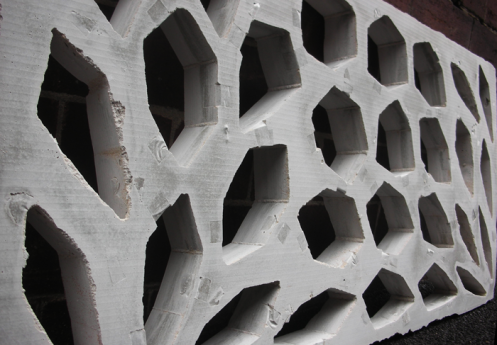
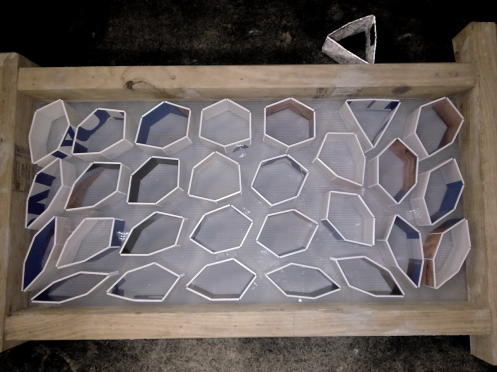
"This experiment describes methods of forming prefabricated, concrete structures using molds made from polypropylene sheets. A number of hexagonal elements are made by polyproplylene which are able to transform to different shapes of hexagon."
4.
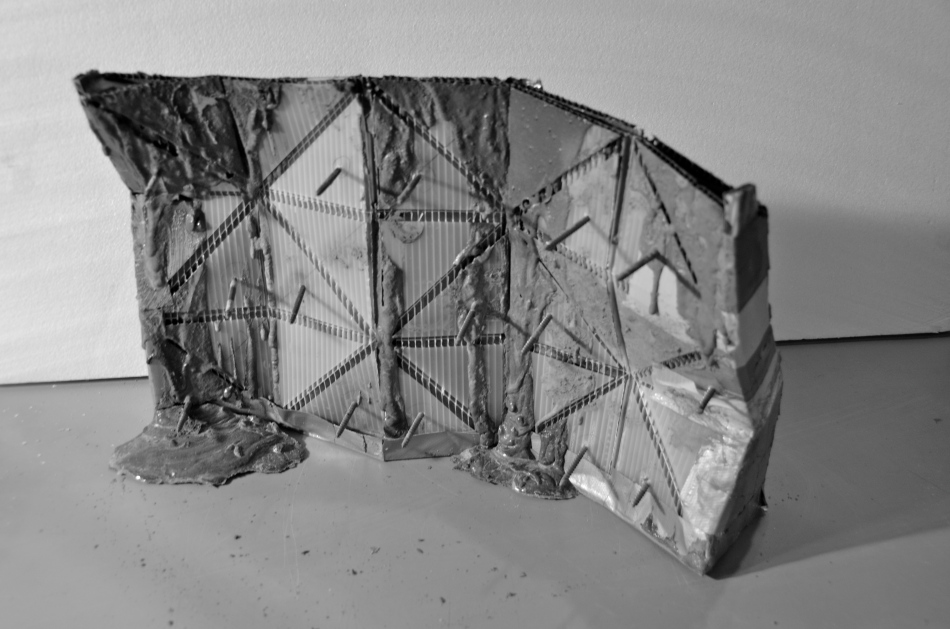

5.


“An example script for processing, a pixel based fluid simulation, is the basic inspiration for the project. The most fascinating aspects in that simulation are, to start from a homogenous field of pixels and vary the appearance by impacting a directed force. The pixels interfere with each other and form brighter and darker or less and more dense areas. By impacting the field with two or more forces, each force interferes with the other. To simulate the potential in a physical, 3 dimensional way, we built plasticine models using the same idea of impacting a homogenous field with directed forces.”
"Since the potential was there it became necessary to go back to digital way for larger scale and more detail. Maya with its implemented fluid simulation and 3d-ability served as a good tool to continue. First step of the visualization was to create a homogenous grid and deform it in x, y and z direction by translating the data from the fluid simulation via script to vectors which create new 3d coordinates for the single gridlines. The transformation in z direction is defined by the velocity of the particles in the fluid simulation.“
(Although it is not concrete casting, it is inspiring....)

No comments:
Post a Comment